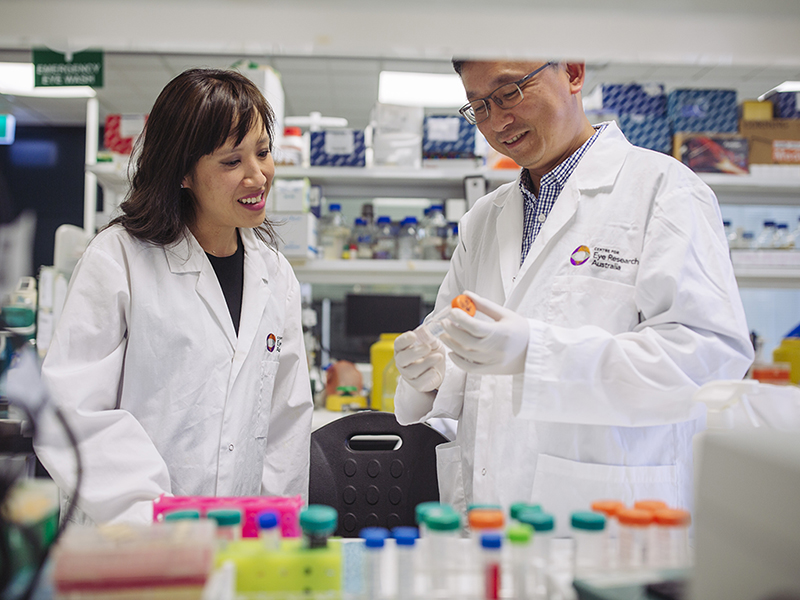Research
Saving sight from scarring
CERA researchers are investigating whether gene therapy could be used to combat scarring after glaucoma surgery.
Glaucoma surgery is a highly effective way of preserving sight, but like most treatments, it comes with challenges.
The medicine that is currently used after surgery, which reduces scarring, is toxic and carries a risk of vision loss.
Now researchers from across CERA are working to investigate if gene therapy can be used to combat scarring instead.
“We want to go straight to the source of scarring,” says Dr Jennifer Fan Gaskin, Head of Ocular Fibrosis Research and Consultant Ophthalmologist at the Royal Victorian Eye and Ear Hospital.
Dr Fan Gaskin is working with Associate Professor Guei-Sheung (Rick) Liu, Head of the Genetic Engineering Research Unit, and Associate Professor Raymond Wong, Head of the Cellular Reprogramming Unit, to pinpoint the genes involved the scarring process and develop a potential gene therapy to prevent scarring
She is also working with CERA’s Head of Macular Research Professor Robyn Guymer AM, investigating macular degeneration and corneal scarring, in the hope the treatment could eventually be applied to other eye diseases.
“Scarring is not just a problem with glaucoma surgery, it is a source of disease for almost every part of the eye,” Dr Fan Gaskin says.
Scar tissue
When medicated eye drops and laser surgery aren’t an option for patients with glaucoma, filtration surgery is the next choice to reduce eye pressure and help preserve eyesight.
In the procedure, surgeons create an extra ‘drain’ in the eye to release excess fluid, reducing pressure and protecting the optic nerve from further damage.
Dr Fan Gaskin says the body naturally forms scar tissue, which can block the drain and cause it to fail.
“We have to use very strong anti-scarring medication that is quite toxic and not specific to the cells we are targeting.”
The medication can weaken the healthy tissue around the new drain, which can eventually cause leakage and open the area to infection.
“At worst, this can lead to a total loss of eyesight,” she says.

Identifying scarring genes
To help Associate Professor Wong pinpoint the genes involved in scarring, Dr Fan Gaskin and her team will take healthy cells from glaucoma patients before they undergo filtration surgery.
“We will take a biopsy of the tissue that typically goes on to scar after surgery and sequence the genes to identify the specific genes involved in the scarring process,” says Dr Fan Gaskin.
“Then we manipulate the cells in the lab to encourage scarring and see what happens to the genes.”
Associate Professor Wong and his team look at the gene changes to determine which one is involved in scar formation.
“It’s very likely this approach will allow us to target the genes that are important in the scarring process,” says Associate Professor Wong.
Editing genes
Using CRISPR gene editing, Associate Professor Liu’s team plans to edit the gene that promotes the scarring process to prevent scars from forming excessively.
“This could potentially result in a more effective, targeted and longer-lasting treatment than the currently used drug,” says Associate Professor Liu.
In the future, a potential gene therapy could be delivered via an injection to the eye as part of the treatment.
While the research is still early, Associate Professor Liu is cautiously optimistic as gene therapy has been successful in treating other eye diseases.
“If this is successful, we can move our research from the lab to the clinic,” he says.
